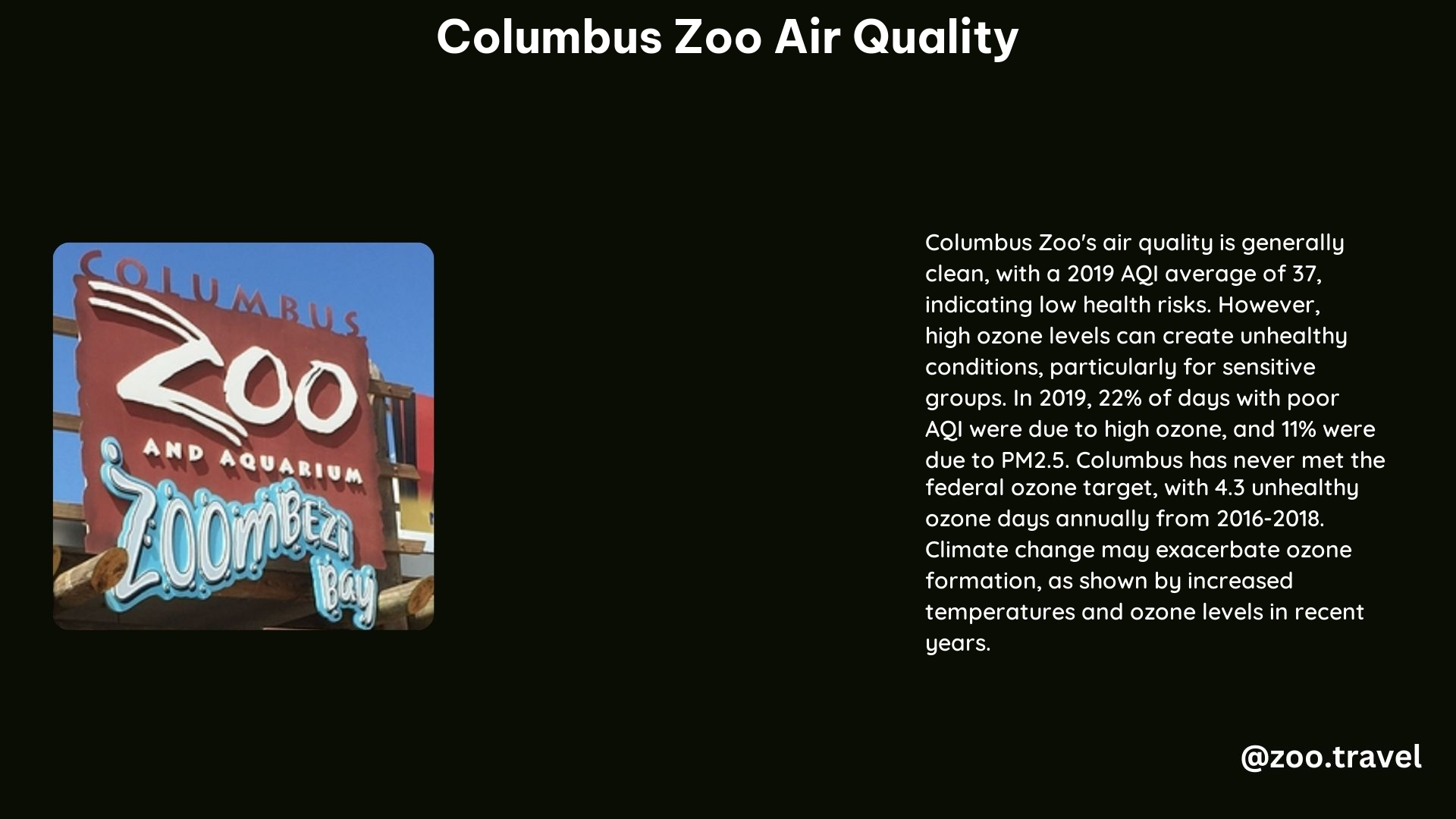The Columbus Zoo, located in Columbus, Ohio, is a popular destination for nature enthusiasts and animal lovers alike. However, the air quality in the area is an important factor to consider when planning a visit. In this comprehensive guide, we’ll explore the air quality at the Columbus Zoo, providing you with the information you need to make the most of your zoo experience.
The Overall Air Quality at the Columbus Zoo
The Columbus Zoo generally has clean air quality, with an average annual Air Quality Index (AQI) score of 37, which is considered “good.” This means that the air poses little to no health risk for the general public. However, certain pollutants, such as fine particulate matter (PM2.5) and ozone, can contribute to unhealthy air quality at times.
Seasonal Variations in Air Quality

The air quality at the Columbus Zoo can vary throughout the year, with the summer months typically experiencing the most severe air pollution. During the summer, 22% of days exceed the US “good” AQI standards due to high ozone levels. Additionally, 11% of days exceed this standard due to high levels of fine particle pollution (PM2.5).
Ozone Pollution at the Columbus Zoo
One of the primary air quality concerns at the Columbus Zoo is ozone pollution. Columbus’s worst air pollution rating comes from ozone pollution, which received an “F” rating in the 2019 “State of the Air” report. From 2016 to 2018, Franklin County, where the Columbus Zoo is located, experienced an average of 4.3 unhealthy ozone days annually, exceeding the federal target of 3.2 unhealthy days a year.
Trends in Air Quality
While the number of unhealthy ozone days has been declining, “moderate” ozone levels, which exceed federal “good” standards, have been increasing. This may be due to the effects of climate change, as higher temperatures can accelerate ozone formation.
Monitoring Air Quality at the Columbus Zoo
To stay informed about the current air quality at the Columbus Zoo, you can track the localized AQI and forecast on AccuWeather. For real-time air quality reports and forecasts, you can also check Plume Labs. The GAIA air quality monitor, which uses laser particle sensors to measure PM2.5 and PM10 particle pollution, is a useful tool for monitoring air pollution levels in real-time.
Sensitive Groups and Air Quality Concerns
Even with generally clean air quality, certain groups, such as active children, adults, and people with respiratory diseases like asthma, should limit prolonged outdoor exertion on days when air pollution levels are moderate or higher. On days when the air quality is unhealthy for sensitive groups, everyone should reduce time spent outside and avoid prolonged outdoor exertion.
Conclusion
The Columbus Zoo is a beloved destination for many, but it’s important to be aware of the air quality in the area. By understanding the seasonal variations, monitoring air quality, and taking precautions on days with poor air quality, you can ensure that your visit to the Columbus Zoo is both enjoyable and safe.
References:
– IQAir – Columbus, Ohio Air Quality
– AccuWeather – Columbus Zoo Air Quality Index
– Plume Labs – Air Quality in Columbus Zoo
– AQICN – Columbus Air Quality Map
